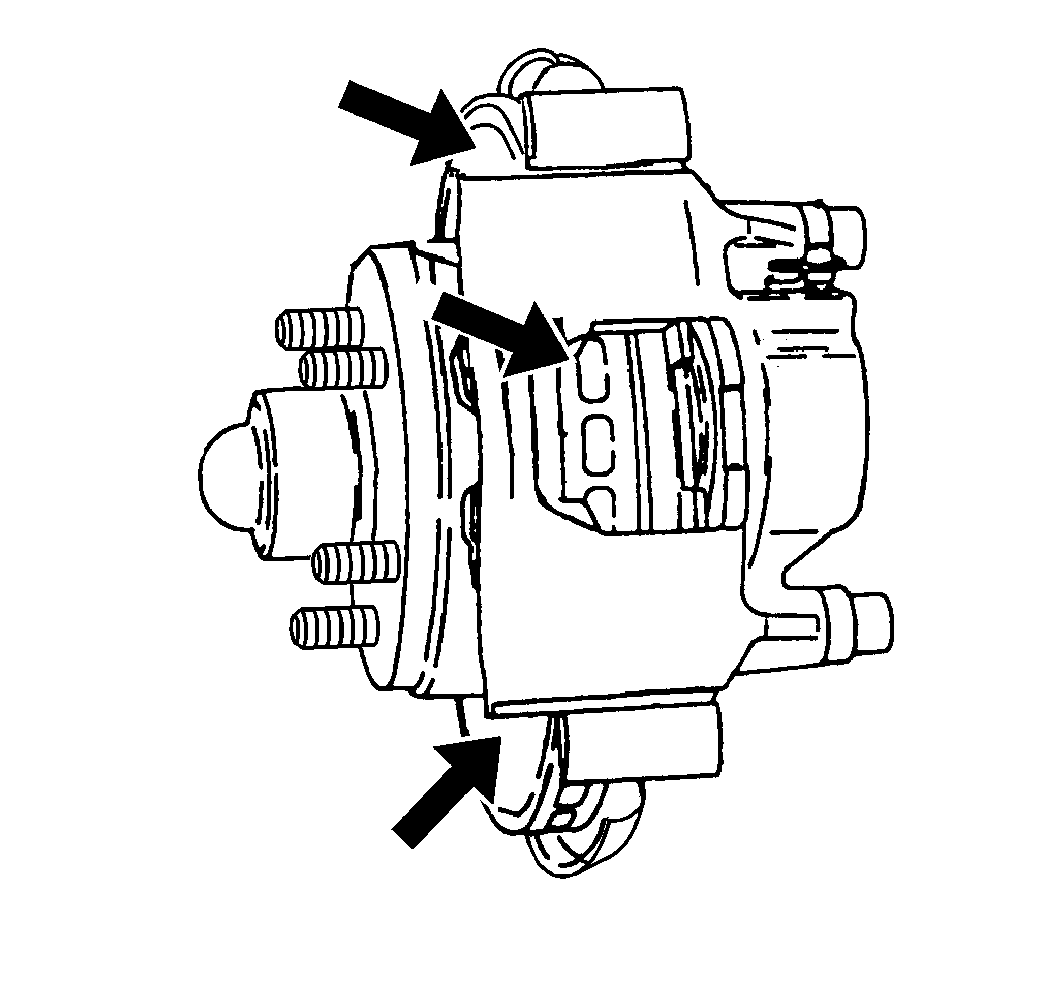Inspect the brake pads every 6,000 miles (9650 km)
or any time the wheels are removed, for example in the case of tire rotation.

Check both ends of the
outer pad by looking in at each end of the caliper. The ends are the points
where the highest rate of wear normally occurs. At the same time, check
the thickness of the inner pad to make sure it has not worn prematurely.
Some inboard shoes and pads have a thermal layer against the shoe, integrally
molded with the pad. Do not confuse this extra layer with uneven inboard-outboard
pad wear. Look down through the inspection hole in the top of the caliper
to view the inner pad. Replace the brake pads whenever the thickness of
any pad is worn to within 0.76 mm (0.030 in) of the pad or
rivet head. Always replace the brake pads as complete sets.
| • | The fastener tightening specifications are for dry, unlubricated
fasteners. |
| • | Perform all of the service operations on a clean bench which is
free of any mineral oil or other contaminants. |
| • | Use extreme care when working around the antilock components to
prevent any damage or misalignment. |
| • | Pump the brake pedal until it is firm before moving the vehicle.
Check the brake fluid level in the brake master cylinder after pumping the
brakes. Refer to
Master Cylinder Reservoir Filling
in Hydraulic Brakes. |

